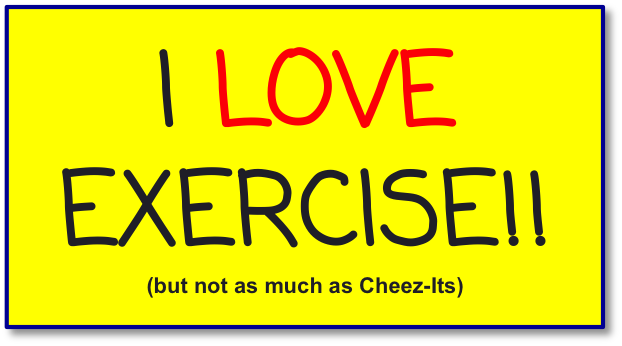Introducing a Little Exercise
The other day I came across a blog post titled “How to Become an Exercise Addict”. As a recovering “Cheez-It” addict, the title enticed me (not unlike Cheez-Its), and I read the post. Okay, part of the post. There were 21 steps to get to an exercise addiction, 18 too many for me. Turns out it was really about how to make exercise a habit, not an addiction. So even though my fantasy of replacing the Cheez-It addiction with exercise evaporated, I realized I could beat the other blogger by 14 whole steps, offering just 7 steps to make exercise a habit!! That’s a 200% reduction-savings for you, lazy habit makers, and please check my math.




